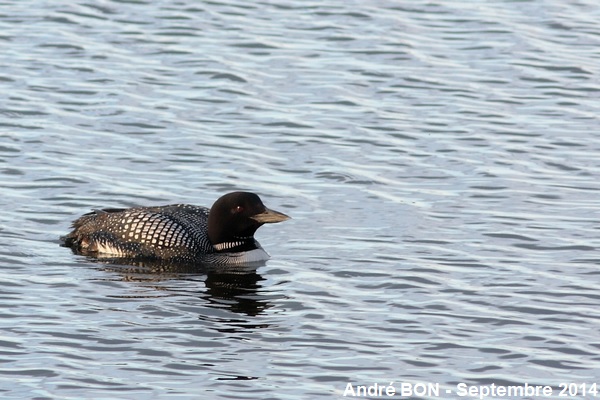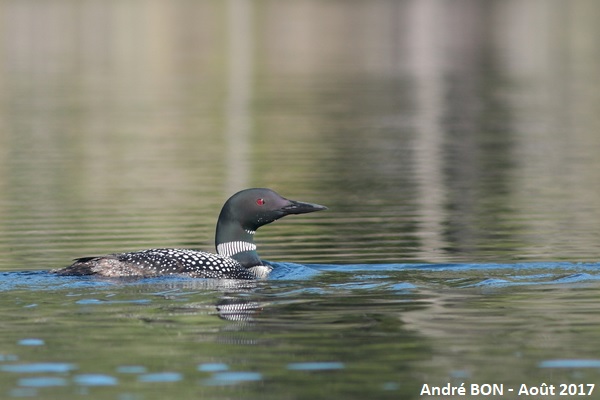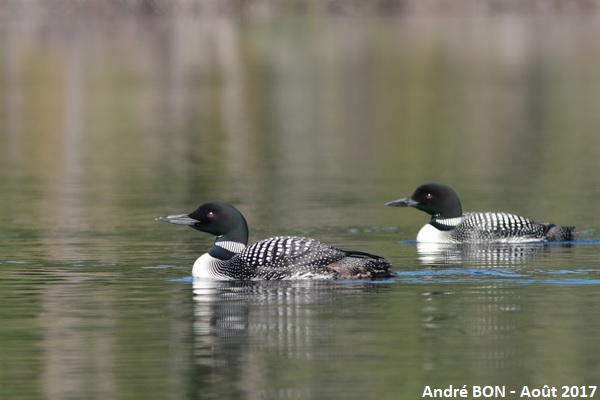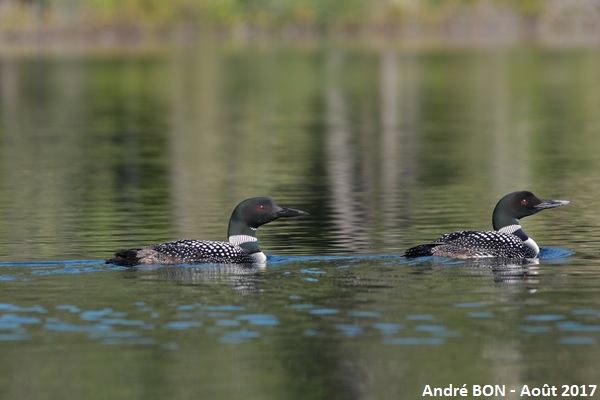



| Common Loon (Gavia immer (Brünnich, 1764)) |




|
|
Scientific name: Gavia immer (Brünnich, 1764) Common name: Common Loon Other names: Great Northern Diver French name: Plongeon imbrin, Plongeon huard, Huard à collier. Order: Gaviiformes Family: Gaviidae Size: Body size: 70 to 88cm; Weight: 2700 to 4500g; Wingspan: 117 to 147cm. Habitat: Large lakes, coastal areas, rivers, estuaries. Food: Essentially fishes caught while diving at about 10-12 metres deep and sometimes more. They may also catch small molluscs and crustaceans as a complement. Nesting: The nest is a simple depression in an open area on the banks of a water body. Females lay 2 eggs in May-June. Females are used to carrying their chicks on their back during several weeks. Migration: Canada, north of the United States, south of Greenland, Iceland. Geographic area: Common Loons winter along the Pacific and Atlantic coasts of the United States and even south to Mexico. Some birds winter also along the Atlantic coasts of Western Europe. |
Common Loons are black and white in breeding plumage. The head and neck are black with a green sheen. The neck is marked with a thin white line at the front and with two white patches located lower on each side. These markings are crossed by black vertical lines. The upper side of the body is black and spotted with white, the underside is white. The eyes are red. The bill is strong, straight and pointed. In winter plumage, the upper side of the body is greyish brown. The cap and nape are dark. The front of the neck and the under parts are white. |
| [To know more about the Common Loon] [Next picture] [Top] |

|
Though Common Loons are rather North American birds, you can find a few pairs in Iceland. |
| [To know more about the Common Loon] [Next picture] [Previous picture] [Top] |

|
After having seen the Common Loon on the 1 Canadian dollar coin, here it is in real life in its natural environment. |
| [To know more about the Common Loon] [Next picture] [Previous picture] [Top] |

|
It only takes a few tens of meters by canoe on Lake Pal to feel alone in the world in the middle of nature and disconnected from daily hassles. And as occupation, we tried to place our boat to photograph this beautiful pair of Common Loons from the best angle, without insisting too long so as not to disturb their tranquillity too much. |
| [To know more about the Common Loon] [Previous picture] [Top] |

|
There is no sexual dimorphism and it is difficult to know which is male and which is female. |